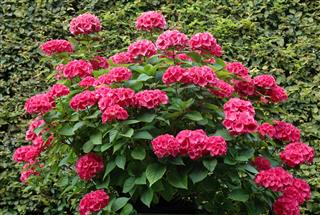
The life cycle of a flowering plant starts with a seed. The seed germinates to produce a sapling, which matures into a plant. This plant then reproduces to form new seeds which then begin the next life cycle The following article elaborates on the life cycle of a flowering plant.
You must be fond of growing attractive flowering plants inside and around your home. They can make your environment refreshing with their fragrance as well as offer a very charming look to the surroundings. The life cycle of a flowering plant comprises several different stages. However, before we latch into studying about their life cycle, it is essential to study the structure of the same.
Structure
Roots, stem, leaves, flowers, and fruits are the basic parts of any flowering plant. Talking about the root system, the main root/ taproot has several branches known as lateral roots and root hair. Roots grow deep in the ground and their main function is to absorb water and mineral salts from soil. The shoot system includes stem, leaves, and flowers.
Stem grows above the ground surface and has several branches. Its main function is to give support and help in transportation of water and minerals from root to other parts. Leaves play an important role in the process of photosynthesis, which is a crucial process for the growth of plant. Flowers are essential for reproduction of the plant as they help attract pollinators.
Life Cycle: An Overview
Flowering plants (angiosperms) are included in the vascular plant division,Anthophyta. Flowers and seed-bearing fruits are their reproductive organs. Flowers may be bisexual or unisexual depending upon the presence of type of sex organs such as male stamen and female pistil. Species having separate male and female flowers on the same plant are known as monoecious, while species having separate female and male flowers on different plants are called dioecious.
Female pistil consists of stigma, style, and ovary with single or many carpels. Male stamen comprises a pollen-bearing anther and stalk or filament. The following points explain the process of pollination.
- A dormant seed lying in the ground requires oxygen, water, and favorable growth conditions in order to develop into a flowering plant. Some seeds lying in the ground gets favorable environment and grows into a mature plant.
- When seed gets enough oxygen and water it begins to germinate. The first sign of germination is growth of roots into soil. Following this, growth of stem starts upwards towards the light.
- Stem continuously grows and bears leaves and flowers.
- Mature flowers contain the parts that enable the plant to reproduce. Pollination is a crucial part in reproduction of plant. Pollen are dispersed through various means such as insects, wind, birds, etc.
- The next step is fertilization, which is the fusion of male and female gametes. After landing on a stigma, binucleate pollen grain germinates and develops a pollen tube. Pollen tube grows down through style into the ovary. In ovary, it penetrates the ovule through micropyle (opening in the ovule wall).
- Flowering plants exhibit double fertilization which involves two sperms from the pollen tube. One sperm fuses with egg, forming a diploid zygote, while another combines with two polar nuclei to develop the triploid endosperm.
- The zygote gets developed into embryo and nutritive tissue surrounding the embryo is formed from the endosperm. During this process, ovule increases in size and becomes a mature seed. Outer two layers of ovule form the seed coat.
- The ripened ovary is known as a fruit, which may be dry or fleshy. When the fruit gets dried and bursts open releasing seeds, they are dispersed by insects, animals, birds, or wind.
- The fertilized seeds fall on the ground and there is a start of same life cycle.
Hope the above information helped you out in figuring out a flowering plant’s life cycle.








